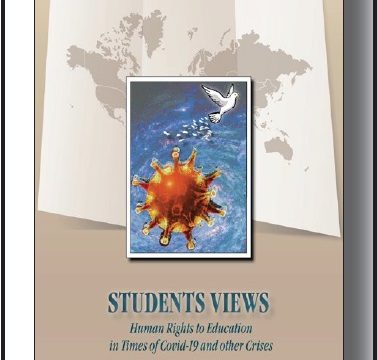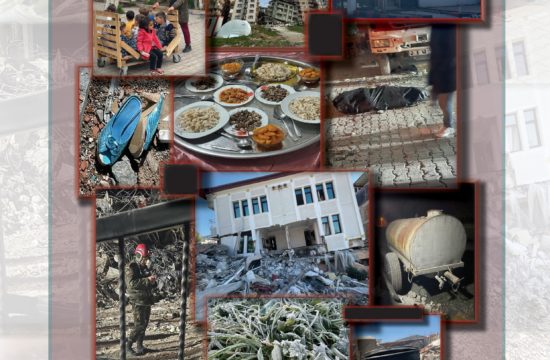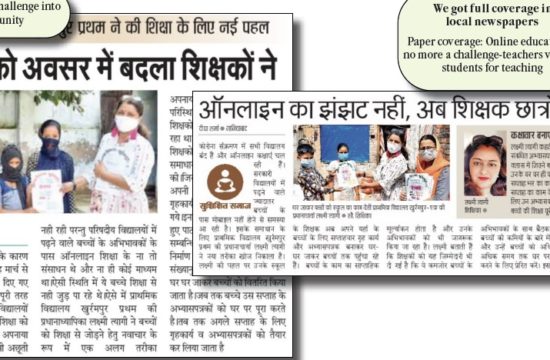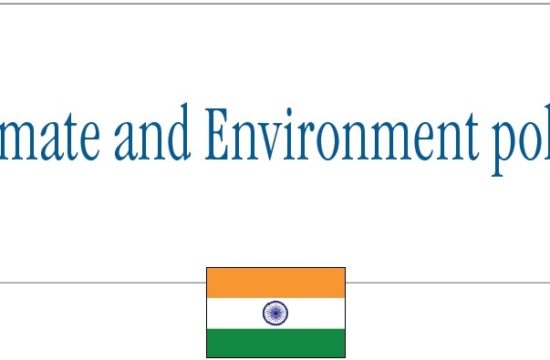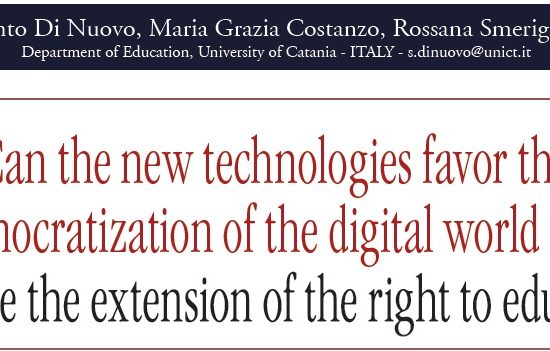Rama Kant Rai
Country Convener at National Coalition for Education (NCE) INDIA – convener@nceindia.org
Indian government after signing the “Incheon Declaration”( Education 2030) and subsequently Sustainable Development Goal 4 (Ensure Inclusive and Equitable Quality Education and promote Life Long learning opportunities for all) has brought out the New Education Policy 2020 after almost three and half decades. The New Education Policy 2020 (NEP) envisages transforming the entire conventional education system right from early child hood to University and posting doctoral level. The NEP policy has been introduced without any debate in either house of Indian parliament on 29 July 2020. It has created a countrywide debate on its positive and negative impacts. The NEP policy has overambitious vision to completely overhaul the education system.
India has missed to achieve the earlier commitments of international covenants on education goals. The Jomtein declaration 1990 where India was a signatory of the goal “Education for All by 2000 was left unfinished.,
Later on India became signatory to “Dakar Declaration” (Dakar Framework on Education) in the year 2000 promising Education for all by 2015, which again remained unfinished by 2015.
However in between govt of India amended its constitution and inserted article 21 A making elementary education a fundamental right during the ages 6- 14 years. This is definitely a welcome decision.
Finally the Indian government has signed the sustainable Development Goal 4 which talks about revamping the unfinished earlier goals and envisions achieving following goals by 2030;
• By 2030, ensure that all girls and boys complete free, equitable and quality primary and secondary education leading to relevant and Goal-4 effective learning outcomes.
• By 2030, ensure that all girls and boys have access to quality early childhood development, care and pre-primary education so that they are ready for primary education.
• By 2030, ensure equal access for all women and men to affordable and quality technical, vocational and tertiary education, including university.
• By 2030, substantially increase the number of youth and adults who have relevant skills, including technical and vocational skills, for employment, decent jobs and entrepreneurship.
• By 2030, eliminate gender disparities in education and ensure equal access to all levels of education and vocational training for the vulnerable, including persons with disabilities, indigenous peoples and children in vulnerable situations.
• By 2030, ensure that all youth and a substantial proportion of adults, both men and women, achieve literacy and numeracy.
• By 2030, ensure that all learners acquire the knowledge and skills needed to promote sustainable development, including, among others, through education for sustainable development and sustainable lifestyles, human rights, gender equality, promotion of a culture of peace and non-violence, global citizenship and appreciation of cultural diversity and of culture‟s contribution to sustainable development.
• Build and upgrade education facilities that are child, disability and gender sensitive and provide safe, nonviolent, inclusive and effective learning environments for all.
• By 2020, substantially expand globally the number of scholarships available to developing countries, in particular least developed countries, small island developing states and African countries, for enrolment in higher education, including vocational training and information and communications technology, technical, engineering and scientific programmes, in developed countries and other developing countries.
• By 2030, substantially increase the supply of qualified teachers, including through international co-operation for teacher training in developing countries, especially least developed countries and small island developing states.1
To achieve these herculean goal resources, regulation, preparedness of teachers and capacity building is required. Let us see how is goes now;
I. The New Education Policy 2020 provisions; Curriculum of School education
The NEP suggests introducing a shift in school education structure of 10 + 2 system (12 years) to be changed to 3 to 18 guided by a 5+3+3+4 (15 years design)
The curriculum would be divided into four stages based on the cognitive ability development of children
(1) Foundational stage(5 years):
A-3 year Anganwadi(Play and nutrition centre)/ preschool /Balvatika (Preprimary are and education centre)) (Ages 3-6) NEP regards ECCE as a single curricular & pedagogical phase of play- and discovery-based learning to enable multiple cognitive abilities for 5 years (3 years of Anganwadi / pre- schools.
B-2 years in primary school in Grades 1-2; both together covering ages 6-8) Vidya Pravesh: Three- month Play-based School Preparation Programme
There will be no examination till grade 2nd.
The challenge is that at pre-primary stage Anganwadi (Ministry of Women and Child) worker (one who takes care of children in preprimary will be given 6 months training to prepare children at pre-primary stage. This looks a very difficult task as these workers are already over stretched with their routine tasks. Also their qualification and background doesn‟t match the pedagogical requirement.
Under the new changed design early childhood education will be a part of formal education. In addition, the NEP 2020 focuses on reducing the curriculum content to make space for critical thinking and in turn, Ths.
(2). Preparatory phase (Age 8-11): consisting of 3 years (Grades 3, 4 & 5) of basic education with text books and more formal classroom learning.
A- Examination starts each class annually
B- Activity + Study will be exercised
C- Language will be regional/ English too may introduced
Foundational Learning Study (FLS): FLN aims to ensure that all the children by the end of Grade 3 achieve foundational learning standards by the year 2026-27 based on baseline for the NIPUN Bharat Mission.
Ten Test items for each class-I to V is developed in Maths, English, and Hindi and for classes 3 to 5 in EVS (Environmental studies)
(3)- Middle School education (age 11-14) 3 years (Grades 6, 7 & 8) would involve subject teaching.
B- Computer sciences will be introduced.
C. Math Sciences, Arts will be introduced
D. One of the Indian languages will be taught
E. Examination continues
• PARAKH (Performance Assessment, Review, and Analysis of Knowledge for Holistic Development), in STARS project districts.
• DIKSHA(Digital Infrastructure for knowledge sharing) DIGITAL platform developed by DoSEL (Deptt of School Education and Literacy) and Ek Step (a Civil Society Organization) as a part of its CSR (Corporate Social Responsibility initiative and is hosted through NCERT(National Council for Educational Research and Training)
(4). SECONDARY Education (Higher) phase of four years (Grades 9, 10, 11 & 12) (age 14-18).2
• No stream from Secondary stage. Means students can opt for any subject of their choice.
• Multiple subject science, social science, commerce etc will be introduced.
• One Foreign language; English, German, French etc. will be taught.
JANUARY-APRIL 2023 | Edition: Nr. 9
PoliTeknik United
• Critical thinking will be taught
• Examinations will be carried in two semesters in each class
• This last phase of 4 years of secondary school education will facilitate multidisciplinary studies with exit options to Liberal Arts education.
• This stage aims to develop individuals with 21st-century skills instilled in them. Hence, all aspects of the curriculum and pedagogy need to be restructured to attain these goals
• 4-14 every student will take a fun project /activity on „The Languages of India‟ sometime in Grades 6-8.
• 4-17. Sanskrit will be offered at all levels of school and higher education as one of the option. Also all other classical languages and literatures of India.
• 4-19. In addition to Indian languages foreign languages such as Korean, Chinese, Japanese, Thai, French, German, Spanish, or Russian will also be widely offered at the secondary level.
(5) At Graduation level
The students will be given multiple choices at graduation level;
-After one year completion of study
Certificate will be awarded
-After two years completion
Diploma level will be awarded
-After three years completion
Degree Level/ Job completion
-After four years completion
Research degree
-Post Graduation
(1 year for 4 yrs/2 Year for 3 years)
-Ph.D
4 years
Eligibility for re-entry (Students can make reentry after leaving one course and can join the next course).
M. Phil course has been removed.
Result: Result marking will be based on: Self evaluation, Friends (Peer) evaluation, Parents assessment and Teachers.3
II. Regulation of school system:
1. The National Education Policy – 2020 is proposing many new layers of so called independent regulatory system, scrapping or sidelining the existing govt system which aims to scrap states’ autonomy and power on the matters of education. It also proposes to create a new Teachers’ Training Authority to regulate the teaching profession of the country. In other words state will not have any say in such rules as per their need. And perhaps this will be against the constitutional value of India where education is in ‘Concurrent list’.
2. In the name of “light but tight” self disclosure of regulatory information will be allowed.
3. The policy does not envisage any plan to strengthen, empower and upgrade our existing government schools. Rather it focuses on private philanthropies or non-state actors. It does intend to strengthen the public education system.
4. SEZ: In areas where large population is educationally-disadvantaged (SEDGs) should be declared Special Education Zones (SEZs), (6.6).
5. This is again an impractical proposition as educationally-disadvantaged population is not located in a particular location rather there are sporadic populations at Railway stations, shops, markets, agricultural fields and unorganized sector units. SO SEZ will be a futile move.
6. Out of school children: The NSSO (75th round 2017-18) enumerates 3.22 Crore out of school children. The policy is completely silent as to what measure will be taken to mainstream these children including child labour and children in difficult circumstances.4
7. The issue of child labour, disable children and children in difficult circumstances have not been adequately addressed in the NEP 2020
8. There is no mention as to how such children will be taken out from child labour and mainstreamed in regular schools.
III. Challenges in Implementing New Education Policy 2020
The challenges in successfully implementing these changes include modifying the curriculum in accordance with the National Curriculum Framework. Also, educators need to rethink the learning content rubric and modify the textbooks accordingly.
It’s a pity that India is facing a massive challenge of scarcity of teachers. We have 9.5 million vacant posts in various stages of school system. This needs to be filled immediately.
Secondly the teachers need to be trained in new structure and pedagogy to deliver the deliverable pedagogical inputs in schooling.
• Lack of digital infrastructure in schools:
The digital divide is evident across class, gender, region or place of residence. Among the poorest 20% households, only 2.7% have access to a computer and 8.9% to internet facilities. In case of the top 20% households, the proportions are 27.6% and 50.5%. Despite initiatives from the Central and state governments, there has not been enough expenditure on improving the digital infrastructure for remote learning. In fact, in 2020-’21, the Ministry of Human Resource Development budget for digital e-learning was reduced to Rs 4690 Million from Rs 6040 Million in 2019-’20.
The National Education Policy talks; (4.23.)4 students must have a large amount of flexibility in choosing their individual curricula, certain subjects and skills should be learned by all students to become good, successful, innovative, adaptable, and productive human beings in today’s rapidly-changing world. …. skills include…. physical education, wellness, fitness and sports; collaboration and teamwork; problem solving and logical reasoning; vocational exposure and skills; digital literacy, coding and computational thinking; ethical and moral reasoning; including knowledge and practice of human and Constitutional values gender sensitization; etc.
It also talks to avoid rote learning of students.
These objectives are mostly activity based and peer group learning with socialization and interaction with other children from different class and social background. The digital learning in present context is nothing but rote learning.
Simply initiating the digital education from class room education would mar the social value based learning of collective togetherness among students. One-to-one interactions among peers and teachers are very important for learning. On a digital platform, how students learn and communicate with others is largely dependent on the readiness of both teachers and students to accept digital learning. In the case of distance education, the onus of learning is more on students, which requires discipline.
• Availability of teachers:
The teachers training and orientation in most of the public schools is for conventional teaching. The schools have hardly sufficient infrastructure to extent the digital teaching and learning by teachers. At present there are vacancies of 1 million teachers at all levels of schools. This will be a big challenge to implement the NEP 20204
• Efficient Resourcing and Effective Governance through School Complexes;
As per the provisions of NEP 2020 Multiple public schools will be brought together in an organizational and administrative unit called the school complex. The school complex will become the basic unit of educational administration of the public school system, and will be developed accordingly.
1. This provision will be in contradiction to the norms of RtE Act 2009 wherein schools were to be provided within 1 km radius for primary and within 3 KM for upper Primary students. In this provision the norms of complex is being made as per suitability of resources not on the suitability of children. We are afraid 7-8 km distant schools will be too far for students and they will become drop out.
2. Since this provision is not for private schools the children who won’t have access to public schools will be joining private schools. Hence it will be a promotion of private schools.
3. The school complex should never be encouraged without school mapping exercise to ascertain the availability of public schools to children as per RtE norms.
IV. What is the way out?
1. It is a pity the unorganized migrant workers and their children (mostly out of schools) are neither enumerated in their home state nor in the working state. Hence, no one knows as to how many children of migrant nature are out of school that needs education. The policy makers should immediately and strictly adhere to the provision of identification of such children with age wise, sex wise and disability wise data for the enrollment of such children in schools.
2. RtE Act 2009 should be amended to include pre-primary to class 12 schooling as a fundamental right.
3. Norms and standards of RtE 2009 should be strictly adhered particularly the access of children to schools. School complexes should be reconsidered as per RtE Act norms.
4. Management of a local database on children possibly maintained at the Panchayat level and cross-verified with the school would help greatly in tracking children’s school participation.
5. Related to the above, birth registration records need to be strictly maintained. Registering births must be made mandatory and Panchayat officials charged with updating their records.
6. Education as a Human Rights and the right to education should remain at the centre of all COVID19 crisis response and recovery plans.
7. The UN System should play its role in organizing a global response to the COVID19 crisis, including supporting mitigation measures, financing, social and economic re-organization, in partnership with governments and civil society.
8. During the COVID19 crisis, governments should guarantee the continued provision of school services, including meal distribution, and ensure protection from violence and abuse to out-of-school children.
9. The government should make resources available to the tune of 6% of GDP for education.
10. The vacant posts of teachers should be immediately filled.
11. No privatization should be promoted under NEP 2020 rather govt of india should join hands in advocating for changing Article 26 of UNHDR by making education as state responsibility
- India's stance on SDG 4: Quality Education (unadap.org)
- The New Education Policy in India - Major Highlights and Changes Listed (taxila.in)
- https://niepid.nic.in/nep_2020.pdf
- https://vidhilegalpolicy.in/blog/highlights-of-the-guidelines-for-the-out-of-school-children-and-mitigation-of-loss- of-learning/


